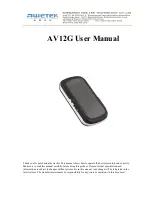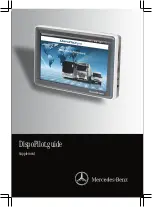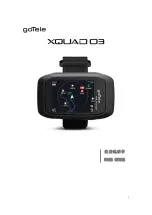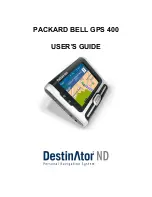
118
dot pattern. Electrical noise can be isolated by selectively turning on and off other electrical
devices to determine the source. Often re-routing the power cable, or connecting to an
alternative power supply (second battery) can help overcome electrical noise. Hydrodynamic
noise (from propeller and/or hull cavitation) has a more random appearance and is generally
related to boat speed, so that faster operation results in more noise. Hydrodynamic noise can be
overcome by proper transducer installation. Many Humminbird® products have a Noise Filter
menu setting that allows the user to clear the screen of noise that is difficult to eliminate.
Pixels:
Pixels are the "picture elements", or small square blocks, that make up the image on the
LCD. Measured as a vertical by horizontal number (i.e. 640V x 320H), this key specification
typically indicates the quality of resolution. In fishfinders, the total resolution (vertical multiplied
by horizontal) is often less important than the "Vertical Pixel" resolution. See
Pixels, Vertical
.
Pixels, Vertical:
Vertical Pixels are a number of vertical picture elements in a single column on an
LCD display. A greater number of vertical pixels provide finer resolution of targets detected by
sonar. Essentially, a vertical distance (the depth), when divided by a larger number, breaks that
distance into smaller samples, each representing a smaller area and thus providing more detail.
In fishfinders, vertical pixels are more critical than horizontal pixels because the horizontal axis of
the display represents time, or history. Sonar information on the horizontal axis can vary greatly,
depending on boat speed and the Chart Speed setting. A greater number of horizontal pixels
show more sonar history that the boat has passed through. On many models, Humminbird®
provides the most vertical pixels to provide a better display resolution. See
Chart Speed
and
Pixels
.
Power Output:
Power output is the amount of sound energy emitted into the water by the sonar
transmitter. Power output is measured using either RMS (Root Mean Square) or P-T-P (Peak-to-
Peak) measurement systems. Either method is acceptable, but it is important, when comparing
power outputs, to make sure that the same measurement system is being used for both outputs,
because P-T-P numbers are 8 times higher than RMS numbers. Greater power output allows the
sonar signal to penetrate through weeds and thermoclines, reach deeper depths and operate
more effectively in noisy environments, such as when the boat is running at high speed.
Pulse Width (Pulse Length):
Pulse Width is the length of time that a sonar sound burst is
transmitted into the water. Shorter pulse widths provide better target separation, but cannot
travel to great depths. Longer pulse widths provide better depth penetration, but result in poorer
target separation. Humminbird® varies pulse width based on depth to optimize both target
separation and depth performance. See
Target Separation
.
QuadraBeam PLUS™:
QuadraBeam PLUS™ is a Humminbird® sonar configuration that uses four
sonar beams for a more detailed bottom image. QuadraBeam PLUS™ uses the DualBeam PLUS™
configuration for downlooking, and also adds two additional beams to look to the left and right.
The sonar beams pointing to the left and right provide the ability to spot fish and structure over
a wide 90° area, and to identify on which side of the boat they are located. See
DualBeam PLUS™
.
Содержание 737 GPS
Страница 1: ...737 GPS Chartplotter Operations Manual 531592 1_A 737 GPS Chartplotter Operations Manual...
Страница 136: ...127 Notes...
Страница 137: ...128 Notes...











































